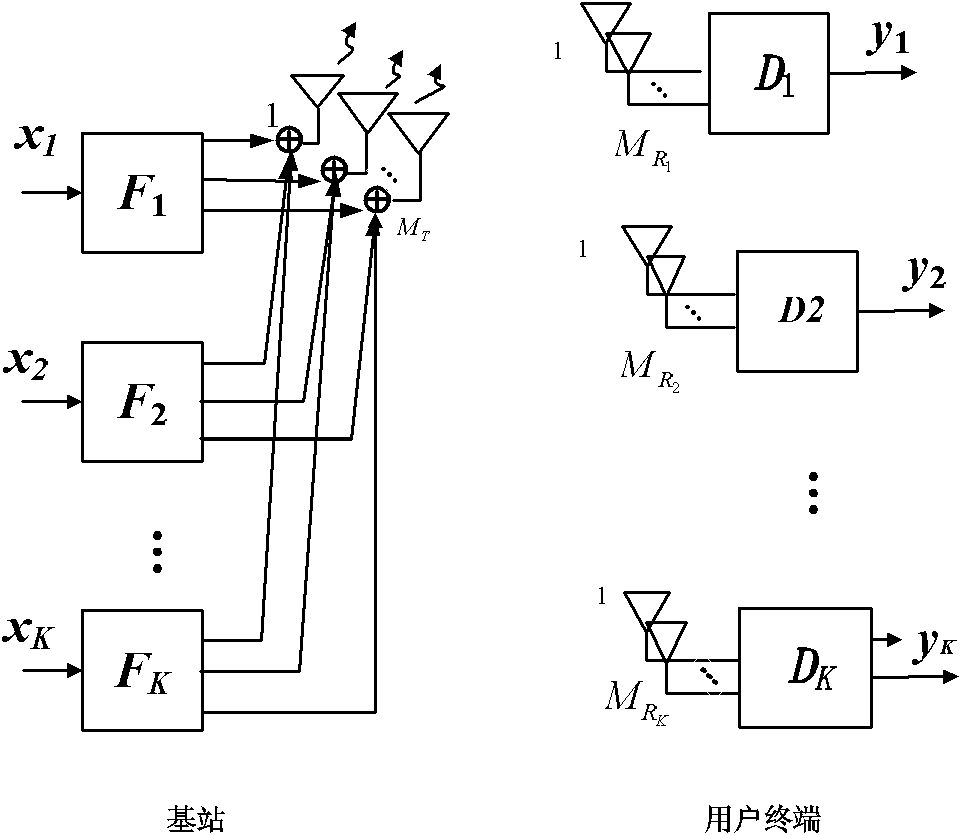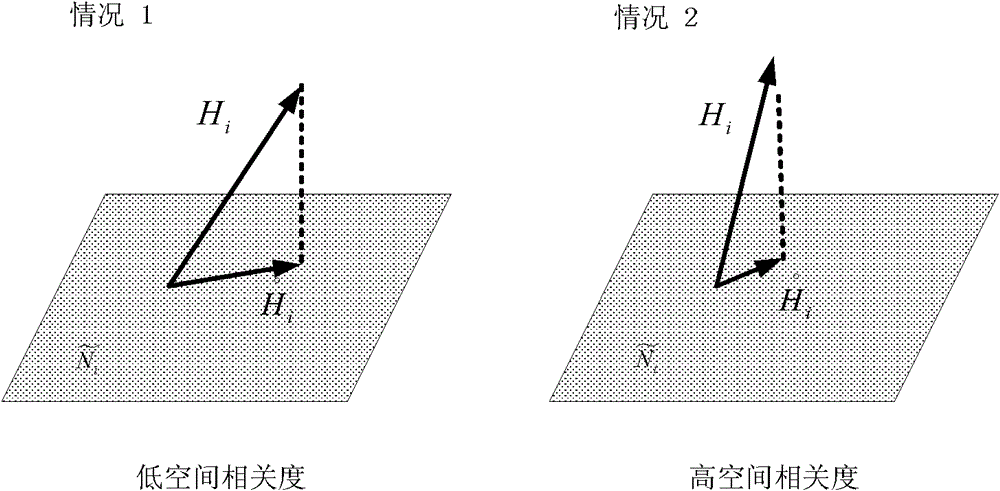SDMA transmission method and base station in multi-carrier mu MIMO system
A carrier and multi-input technology, applied in the field of communication networks, can solve the problems of joint use of precoding algorithms, no scheduling mechanism, and no consideration of MUMIMO transmission architecture, etc., to achieve the effect of eliminating MUI and reducing energy loss
- Summary
- Abstract
- Description
- Claims
- Application Information
AI Technical Summary
Problems solved by technology
Method used
Image
Examples
Embodiment Construction
[0032] figure 1 is a block diagram of the MUMIMO downlink system. Such as figure 1 As shown, there is an M on the side of the base station T transmit antennas; correspondingly, there are K user terminals, and each user terminal has receiving antennas, i=1, 2, ..., K. Therefore, the total number of receiving antennas is Base station has M T channel information between a transmit antenna and a receive antenna of a single user terminal. It should be noted that in this specification, a user and a user terminal have equivalent meanings.
[0033] On the base station side, the transmission signal to be sent to the i-th user is defined as r i - a vector of dimensions x i , where i=1, 2, . . . , K. r i is the number of data streams sent to the i-th user. The vector of K users can be expressed as in
[0034] Each transmitted signal needs to be precoded before transmission. The precoding matrix for K users can be expressed in the form of a joint precoding matrix: in ...
PUM
 Login to View More
Login to View More Abstract
Description
Claims
Application Information
 Login to View More
Login to View More - R&D
- Intellectual Property
- Life Sciences
- Materials
- Tech Scout
- Unparalleled Data Quality
- Higher Quality Content
- 60% Fewer Hallucinations
Browse by: Latest US Patents, China's latest patents, Technical Efficacy Thesaurus, Application Domain, Technology Topic, Popular Technical Reports.
© 2025 PatSnap. All rights reserved.Legal|Privacy policy|Modern Slavery Act Transparency Statement|Sitemap|About US| Contact US: help@patsnap.com



